VB: Very interesting. You do have two partners here. What brought you together with them?
WW: Well that happened many months ago. I first met Jawad Ansari and Raj Parekh a little bit later and we have been exploring this space together. I have been going to this augmented reality conference which I think you are aware of, one in Santa Clara?
VB: I think I missed it.
WW: It is an interesting little sub-community of developers doing augmented reality apps. They are doing different pieces of it, but they typically don’t take an entertainment spin. They map zombies onto your camera feed, which is not what we are doing at all. But yet there is a lot of talent in very small groups that are basically building what I would characterize as solutions in search of a problem. And that’s one of the resources we have been investigating a lot. The talent pool is there. How do we take these small developers doing really cool things and use those more for entertainment purposes, towards this larger idea. Typically, they are building very narrow little apps to do very specific little things. But again, it is more like they are just doing opportunistic technology exploration and not vision-based, large-scale designs toward a specific purpose.
And so that’s part of what we are doing. We are exploring the skill sets that we would need to build up this larger vision. It’s been an exploration process in the last several months. Both internally, the Stupid Fun Club is conceptualizing how we want this whole system to work, mapping out what kind of apps we want to do, what the actual platform is for supporting those apps and then finding a talent pool that we can use to kind of scale up the company.
A big part of this is that we wanted to do this in a big way. We think that this is something more than one little app or one game. It’s really a constellation of apps, some of which would be mobile, some of which might be on a social platform like Facebook. It’s not even platform specific. Some of what we are doing is on computers, some you want to do on your phone, in your tablet. But we feel like it’s something that we want to approach at scale. There will be a bootstrapping process to it, but it’s something that we want to really dive into with both feet.
VB: What is the relationship among the companies here? You are totally doing this separate from the Stupid Fun Club. Basically it has a different mission?.
WW: It is a spin out from the Stupid Fun Club. So the Stupid Fun Club will have some interest in this ongoing entity, but it will be a separate company. It will chart its own course. Stupid Fun Club is actually designed to stay very small and very broad. So Stupid Fun Club is working in a lot of different directions, but I want to keep it as a very small think tank. This [HiveMind] is going to be a little bit more of a traditional path of a Silicon Valley startup, and it will grow to whatever size it needs to.
VB: You have a transmedia element to this, including a TV show?
WW: There are projects we are doing in the Stupid Fun Club on the TV side that are going to have some overlap with this. Some of the applications we are building will actually have linkages to some of the TV concepts that are exploring similar ideas. When I say that we want to develop a series of apps, some of these apps are going to be spread across a different level of interest or involvement. Some people are going to want a little bit more of a fictional spin on life. Some people are going to want much more of a lifestyle app. Others are going to want something that might hang off of an established television idea. So Stupid Fun Club is still going to be a resource for doing these kinds of media linkages, and the Stupid Fun Club is not set out as a production company. HiveMind will be a production company so that other ideas coming out of Stupid Fun Club potentially can be realized in this entity.
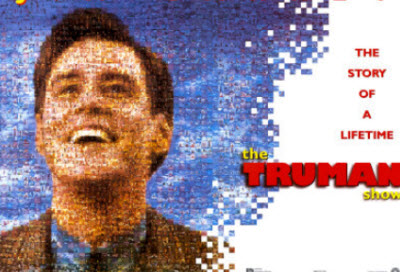 VB: The kind of TV show this makes me think of is some kind of reality show where somebody is being followed around by cameras.
VB: The kind of TV show this makes me think of is some kind of reality show where somebody is being followed around by cameras.
WW: We are working on something very much like that, but I’m not at liberty to talk about it. But we are working on a show with a major broadcast network, and one of the intellectual properties that we want to develop at HiveMind is going to be based upon the show. And I think for a lot of people that might even be their first exposure to the whole concept. They see it on TV and then they find they can get an app; they do that and they find out there are other apps. So we are looking at different funnels to bring users in from different walks of life, all of them probably do not even consider themselves gamers. But they will be very interested in something that will kind of provide this in a level of engagement.
VB: Now, when you go collecting data, you may find different problems. There is the data that you as a company would love to have but that people consider private. There is the data that you can get now and then there is data that you would love to have but there is no way to get it. How do you look at those different challenges?
WW: I think, in terms of the data we would like to have but is private, it’s a matter of getting past a psychological issue. If we would really get the user on our side and provide them with immediate and obvious value for every bit of personal information they give us, then we will be able to get it more easily. If you look at how much time people spend putting personal data into the psychological evaluations for a dating site, you see you can get people to pour in lots of data. They reveal how they see themselves and how they see things in the world. In terms of data that we would like but we can’t get, I don’t think there is any. I think that if we get enough user involvement, we can get almost any data we want. It’s a matter of the user wanting us to have it.
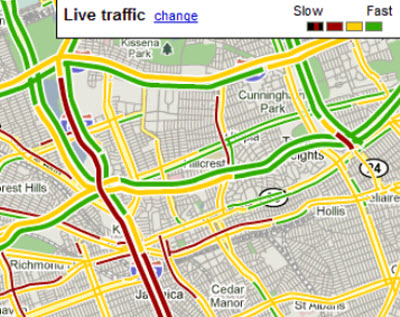 So I see this as more of a psychological battle than anything else. We have designed entrainment experiences that will make users want to give us that data. And from that, if we get enough, we can actually start predicting and creating a lot of it ourselves. I don’t know if you ever played with Google Maps with the traffic data. You can change the time of day and it will show you predictions of traffic based upon past data.
So I see this as more of a psychological battle than anything else. We have designed entrainment experiences that will make users want to give us that data. And from that, if we get enough, we can actually start predicting and creating a lot of it ourselves. I don’t know if you ever played with Google Maps with the traffic data. You can change the time of day and it will show you predictions of traffic based upon past data.
VB: No I haven’t.
WW: It’s actually very cool if you want to go to Google Maps, you click on traffic and then at the bottom it says you can say ‘change the time of day’. Then you can say, show me how the traffic is on a Monday at 2:00pm, or you can dial up any time at all and it will show you the average time patterns given the time of the day in the week. Assuming we have large enough data sets, we can use similar techniques where the users are giving us some sense of what they do during a typical day, how is the feeling, we get that data and then we can actually start predicting ahead what’s on that schedule. We can predict how you will be feeling about what you’re about to do. And the system could even tell the user to give corrections occasionally when it’s way off. We think we can build an entertainment experience around that.
So we try to think about everything we have in terms of data and then build an entertainment experience around that and then we make that experience fulfilling so that the player actually wants to keep doing it and giving the data. For us, that is going to be the secret sauce. If we can turn data acquisition into an entertainment experience and really make it entertaining, we have the opportunity to capture this really unique set of data on individuals that we could never capture right now.
 VB: Now some of the augmented reality games have a particular kind of problem, and that is they depend on having lots of people around you, a heavily populated world where there are a bunch of rival zombie players all around you. But usually not enough people are playing the game yet. And so the closest person to you playing the game might be 50 miles away or something like that. Is there a way to deal with that kind of poorly populated game world?
VB: Now some of the augmented reality games have a particular kind of problem, and that is they depend on having lots of people around you, a heavily populated world where there are a bunch of rival zombie players all around you. But usually not enough people are playing the game yet. And so the closest person to you playing the game might be 50 miles away or something like that. Is there a way to deal with that kind of poorly populated game world?
WW: First, that’s a very particular subset of the reality games: multiplayer games that involve proximity play. We are actually looking at a lot of hybrids, especially in the early apps, where we don’t require that location density. That’s actually a general problem with all location-based entertainment. It is what they call the density problem. We are actually designing some game experiences that do not require you to have other people right next to you. You might give others, like your friends, visibility into where you are and what you are doing. They have input into what you might do next, but then it does not require they be near you. They can have access to a lot of information about your local space without needing other players populating that space.
So we can initially kind of bootstrap the whole endeavor with games that are more focused on individual experiences even though they might involve social play. We just don’t require proximity play. Later, as we get the density, and especially if we have a number of apps all kind of sharing the same people in the same area, where everybody is now a potential player, they can be invited in. The short answer is that density is an issue for some types of games and our strategy is not a single-app strategy. The question is, in what order to you unveil the apps?
VB: It’s an interesting idea. Are there any other things that you would put into the category of personal games, if you think of this as a kind of genre for games?
WW: There are no games that I can I really think of, maybe with the exception of some of the Wii stuff, like Wii Fit and those kinds of things. They are tracking things very personal to you. Brain Age. But those are very specific and they don’t really connect to the world at all. It’s more measuring how good you are at yoga or how good you are at little brain puzzles. I will say, though, that the way those are kind of presented, I would put them in that space.
VB: Are there certain other things that you would like to describe here too?
 WW: You have the gist of the concepts. What I have been describing to you is the individual experience where the world becomes more visible to you and your opportunities. Obviously down the road, and even early on, we wanted to involve a very deep social component to this. This is a different way for you to play with your friends. And, in some sense, your friends can be playing you as a game and you can be playing them, and within that we can actually build this karmic exchange. There is a short story that was another inspiration for this. It was by Bruce Sterling and it was called Maneki Neko.
WW: You have the gist of the concepts. What I have been describing to you is the individual experience where the world becomes more visible to you and your opportunities. Obviously down the road, and even early on, we wanted to involve a very deep social component to this. This is a different way for you to play with your friends. And, in some sense, your friends can be playing you as a game and you can be playing them, and within that we can actually build this karmic exchange. There is a short story that was another inspiration for this. It was by Bruce Sterling and it was called Maneki Neko.
Maneki Neko is Japanese for the beckoning cat. But he describes the system that is almost a kind of karmic system where the computer is tracking people ahead and has a deep understanding of their situations minute to minute, day-to-day and certain people have been doing things to benefit the wider system and they win karma points. And the more karma points you earn, the more your hive, the overall social network of your friends and even strangers, is focused on making your life better. And that’s actually the game currency. The more you help others, the more they help you. And long-term, this is kind of where we want the thing to evolve. The system really wants to make you feel like it’s not just entertaining you, but it’s making your life more interesting and fulfilling. And it’s really a matter of reflecting more and more of a global HiveMind over the internet into your specific circumstance.
VB: And that explains the name of the company.
WW: Definitely.
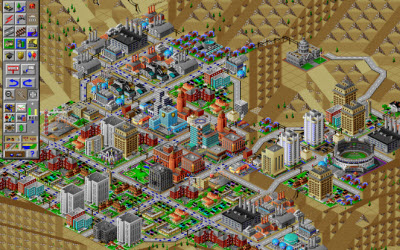 VB: And if you look at your career and gaming, does it feel like a natural evolution for you?
VB: And if you look at your career and gaming, does it feel like a natural evolution for you?
WW: If you look at the arc of the games I have done, starting from SimCity, starting from what kind of city would you like to build or live in or design, then you go to The Sims, where you are designing characters running their lives, to Spore, they are each mining a deeper level of creativity. And they are more and more, over time, focused on the individual. And this is really what this thing is all about. It is about how the individual is not just driving the game to a deeper level; but now we make the game play out of the user. How does the user become the game now, rather than the game just being some kind of fantasy or imagination of the user.
VB: Interesting.
WW: It’s kind of reality-based game in some sense, but not just reality, your reality.
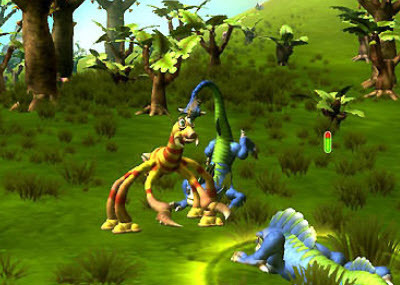 VB: It reminds me of that phrase you used in describing Spore, how it was a “massively single-player game.”
VB: It reminds me of that phrase you used in describing Spore, how it was a “massively single-player game.”
WW: That’s the aspect of having potentially thousands of people interacting with you, while at the same time it’s not like we think of it as a multiplayer game. In multiplayer, I may be on a level treadmill like in World of WarCraft. Or I’m getting my butt kicked in Counter-Strike. Here, I am the center of the game. That’s what I love about single player games. I can always be the hero. But at the same time, you get the crazy involvement and social satisfaction of all the richness that your social network can give you.
VB: So this definitely kind of relates to that same idea?
WW: I have been interested in the idea of crowdsourcing and how you get the collective effort of lots people, making the experience better for the individual, and this is just a more personal spin on it. How do we crowdsource your happiness?
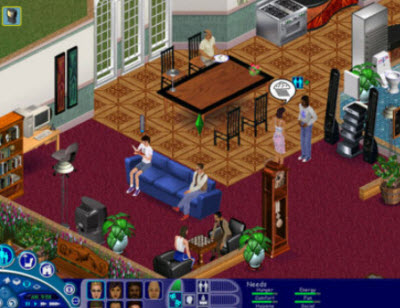 VB: And that comes back to the idea that other people play you as a Sim or create various things in order to grab your attention.
VB: And that comes back to the idea that other people play you as a Sim or create various things in order to grab your attention.
WW: In some sense we can enlist your friends not only to help triangulate you in the 50 dimensions; they can even be competing to answer questions about you. And maybe you are the one judging who most accurately predicted what you like to eat or what you like to do. You can build game play around that, which is very social. But at the same time, we can triangulate you on the social map. At the same time, we can build game experiences to build out the map. Google Maps is great for finding a nearby Starbucks. It’s just not designed for making my life happier.
VB: That’s exciting.
WW: We just kind of we are at the point now where we wanted to start talking about a little bit more about this. You are really the first person we are telling it too because I have known you for so long. I would rather you kind of go out with this. We are exploring a lot of other things on the business side.
VB: Is there something that you guys are hoping to get out of the initial publicity, like developers or some new partners or anything like that?
WW: For me, the one thing I really want to do is this: There are people out there in the world that may hear this idea and may think, ‘That is what I always wanted to build.’ And then we hope they come to us. And one thing we are going to be looking for is really high-level talent. Maybe for every 10 people who respond to that, maybe one of them will actually be qualified. But still it’s so much easier to have the people who really are out-of-the-box thinkers coming to us, having heard us talking about it. They may want to spend a good part of their lives building this. So for me, that’s the biggest thing I’m hoping to get out of this.

